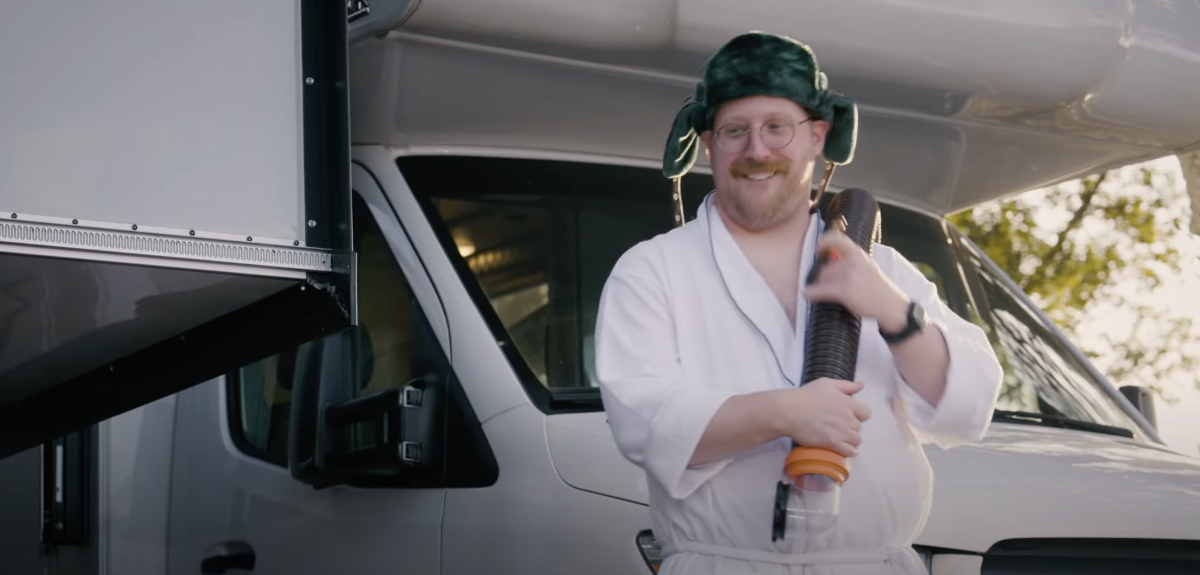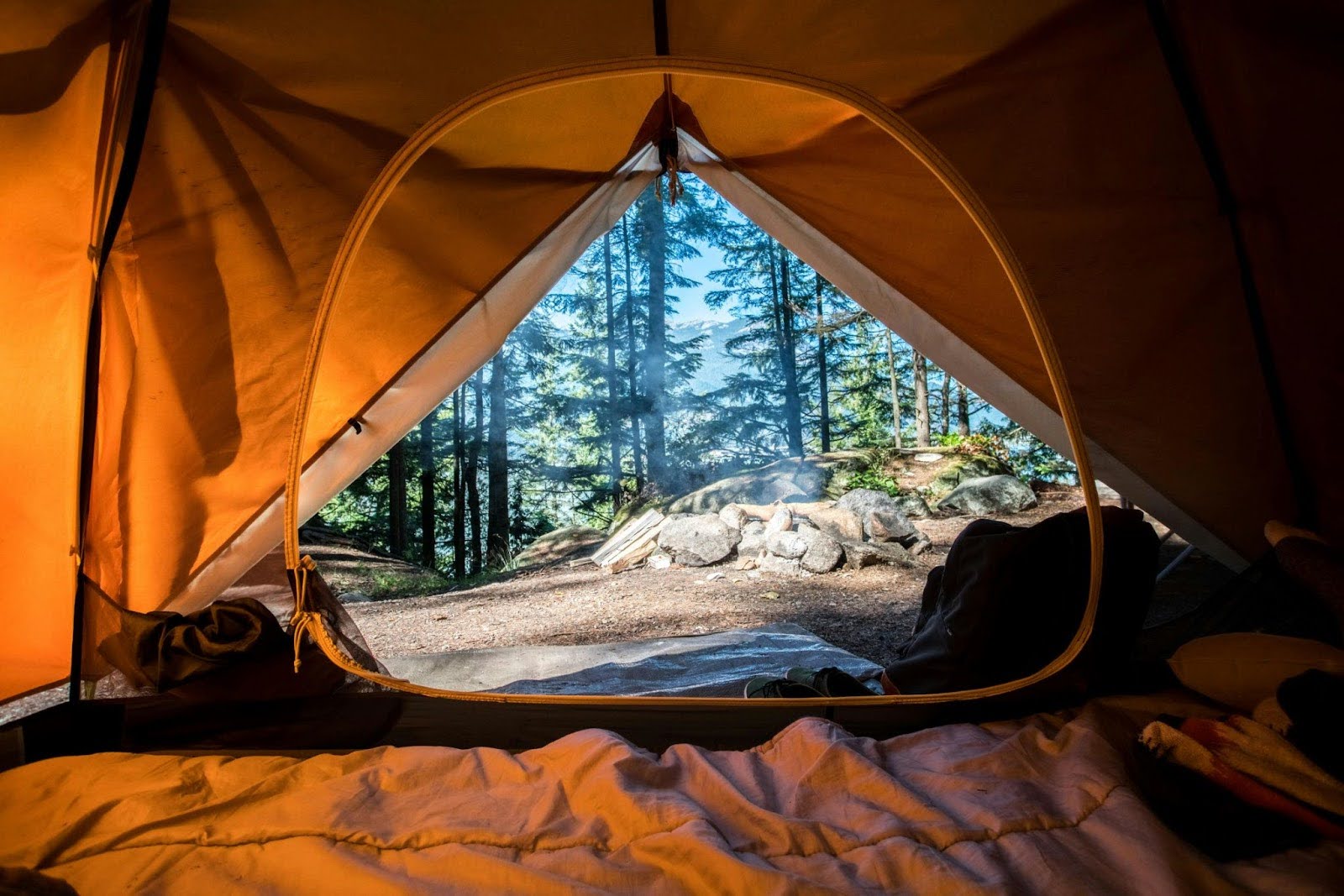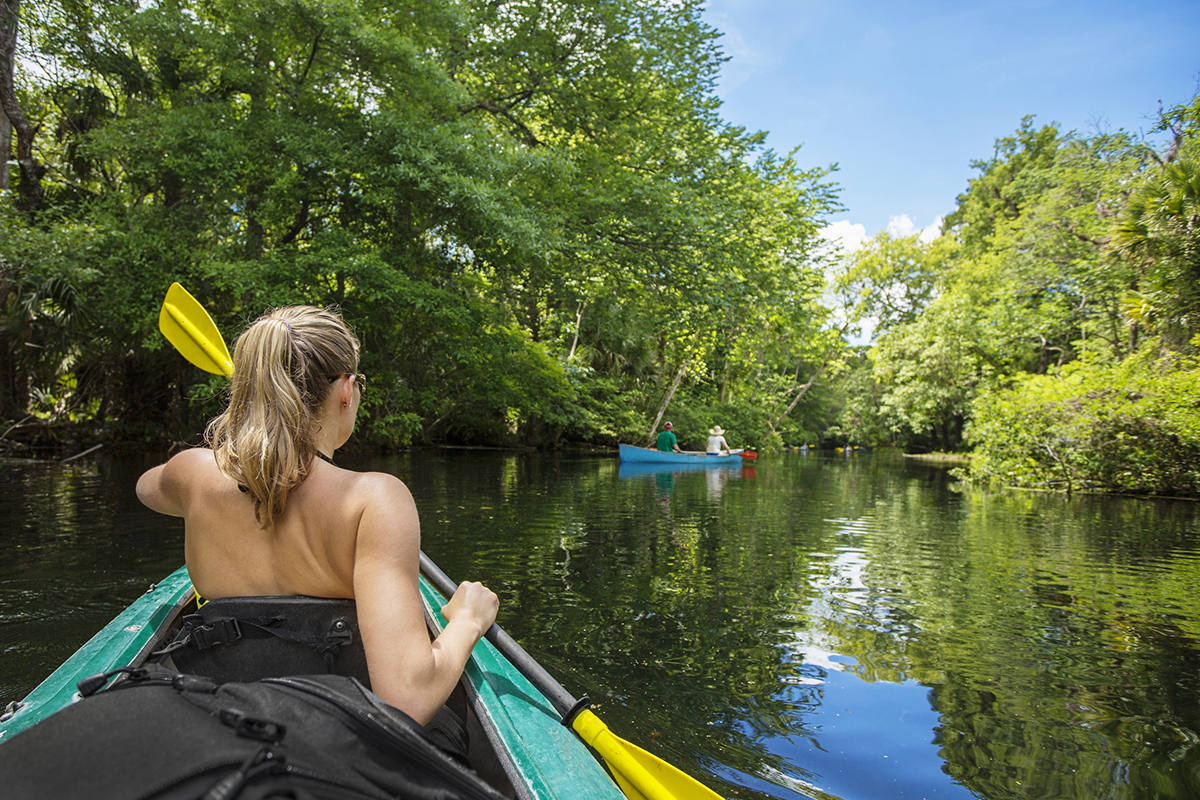Travel to the Past
Turn Back the Hands of Time at These Living-History Museums for Interactive Fun and Learning for the Entire Family
Image Caption: Photo Credit: Julie Perry Nelson
Over the course of two months, I spoke with Thomas Edison and Miles Standish, threw tea into Boston Harbor, and rode in a Model T. No, I am not a time traveler—I’m just an RVer. All of these experiences took place at living history museums.
History is a passion of mine, and much to my children’s frustration I often try to make our travels educational. We seek out living-history museums while towing our travel trailer around the country. The East Coast, in particular, has numerous fantastic museums to explore.
Unlike static museums with items behind cases and placards on walls, living history museums employ people to interpret history. Actors do trades and demonstrate how life was in that time period. Our children enjoy interacting with the interpreters, learning crafts, and our daughter’s favorite activity, trying out different types of beds. At this type of museum, the kids are easily engaged and have so much fun they don’t realize they are learning.
The most impressive collection of living history museums our family has visited was at the Historic Triangle in Virginia: Jamestown, Colonial Williamsburg, and Yorktown. This area is the motherload of history. All three locations are within 25 miles of each other and need multiple days to fully explore.
Jamestown
Jamestown was founded in 1607, the first permanent English settlement in America. There are two separate places to visit in the area. Jamestown Settlement is a living-history museum, while nearby Historic Jamestowne is the actual site of the colony, part history museum, part archeological dig.
We visited Jamestown Settlement to see the area as it was in the 1600s. The settlement includes an indoor museum, a re-creation of a Native American town, James Fort, and replicas of the original three ships on which the colonists sailed from England.
Paspahegh Town was the closest Indigenous settlement to Jamestown. During our visit, there were many interpreters working in and around the reed-covered houses, preparing food, making tools and pottery, and processing animal hides to use in clothing.
Our favorite demonstration was watching the clever way canoes were made. Instead of painstakingly carving out the interior of a log, they carefully burned the inside of a huge tree trunk into the shape they wanted. Inside the fort are numerous wattle-and-daub (mud-and-sticks) structures, including a large home and a church. The riverfront houses the ships, Susan Constant, Godspeed, and Discovery. Visitors can board the Susan Constant to see the towering masts up close.
Colonial Williamsburg
From Jamestown, head east to the next stop in the historic triangle, Colonial Williamsburg. Covering more than 300 acres, the town is the largest living history museum in the world. Colonial Williamsburg has hundreds of restored and re-created buildings lining several blocks and takes multiple days to explore fully.
Dating from before the American Revolution, Williamsburg was the capital of the Colony of Virginia for a number of years before the title was given to the current state capital, Richmond. Walking through town is an immersive experience: strolling among people in Colonial-era clothes, going about their daily activities as if it were the 1700s. Exploring Williamsburg is free for visitors, but to get the most out of the experience, purchase a ticket to enter buildings and watch demonstrations ranging from wig making to gunsmithing and brickmaking.
In the center of town is a pillory, a public form of punishment where the guilty party’s head and hands are placed through holes in a board. The punishment was clearly used to make an example of wrongdoers given the central location. We couldn’t resist trying out the pillory for a photo op and were grateful to have our head and hands freed after a minute or two.
Good Sam Parks Near Williamsburg
American Heritage RV Park is located on 70 acres of meadows and woodlands with every site featuring full hookups, a leveled concrete pad, and patio.
Anvil Campground has bus service to Williamsburg. All sites have a picnic table and fire ring. Premium sites have a grill and a swing.
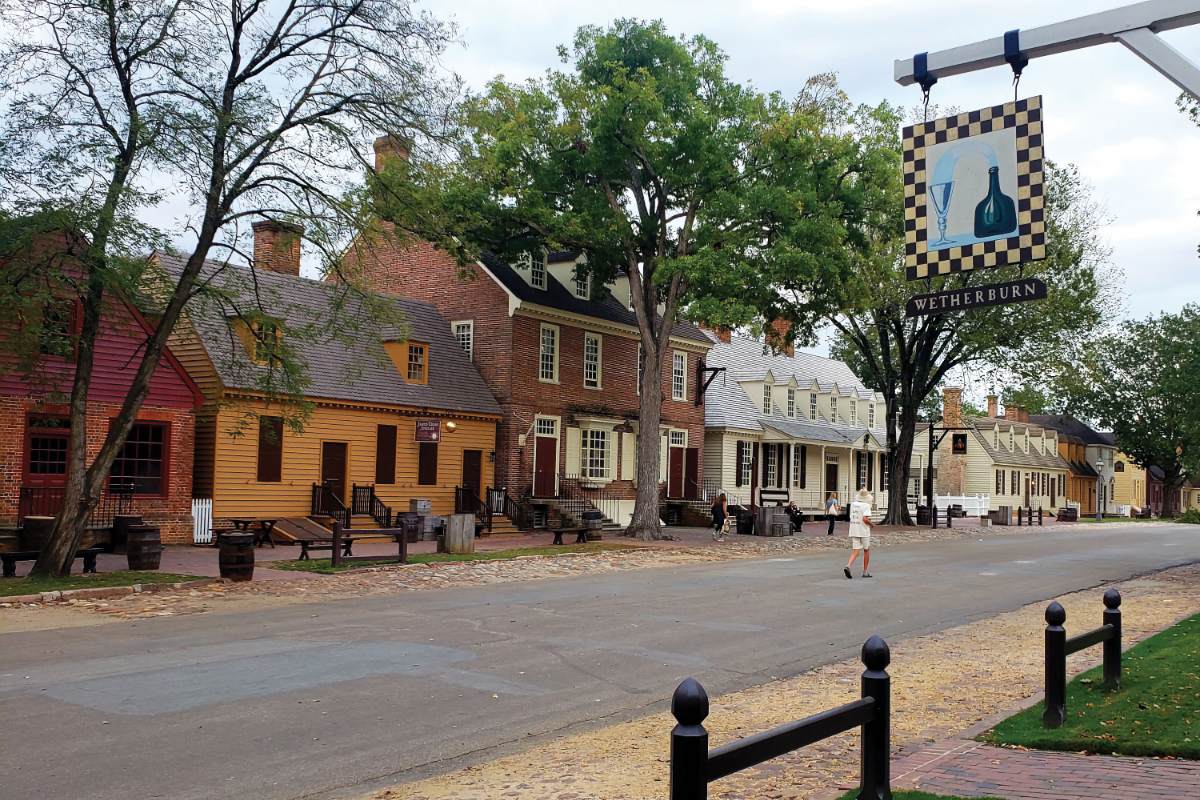
Photo Credit: Julie Perry Nelson
Yorktown
If you are a student of history or have watched the musical “Hamilton,” you know how important Yorktown was in the Revolutionary War. Travel beautiful, tree-lined Colonial Parkway from Williamsburg to Yorktown. At the American Revolution Museum at Yorktown, visit the Continental Army encampment to see and experience the hard life of a soldier, watch military drills and firearm demonstrations, and explore the tents in which soldiers lived. At Yorktown Battlefield, walk the field where the Siege of Yorktown took place, the last major engagement of the Revolutionary War. Some buildings at Yorktown Battlefield were closed at press time due to COVID-19.
Plimoth Patuxet Museum
Head north on Interstate 95 to go further back in time at Plymouth, Massachusetts. As any school child can tell you, Plimouth (the Old World spelling) is where Pilgrims landed the Mayflower in 1620. With help from the Patuxet band of the Wampanoag tribe, it became the first permanent Pilgrim settlement in the New World and, of course, the inspiration for Thanksgiving.
The museum is a wonderful re-creation of the Pilgrims’ town and Wampanoag village overlooking beautiful Plymouth Bay. The thatched-roof homes extend down a hill with crops growing behind them. Walking down the dirt road between houses and breathing in the salt air made me feel as though I were looking through a window to see how those first Pilgrims lived.
My favorite part of our visit was chatting with “Miles Standish,” the most well-known of the leaders of the colony. Standish stayed in character while interacting with us. Our daughter was fascinated with listening to the peculiar way he talked and was reluctant to leave. Since our visit, the meaning of Thanksgiving has become much more tangible to our family.
The Wampanoag’s homes reminded me of huge brown watermelons on their sides. We marveled at how comfortable their animal skin beds felt. Also at the museum is the Mayflower II, a reproduction of the ship the Pilgrims voyaged in to Plimouth. Tours of the ship are available with an additional ticket that helps fund restoration.
Boston Tea Party Ships & Museum
Just north of Plymouth is Boston. Bean Town overflows with history, but our favorite stop was the Boston Tea Party Ships & Museum. The museum’s actors chronicle the events leading up to the famous dumping of tea into Boston Harbor. I loved how the actors included us in the rebellion, starting at a lively community meeting discussing the British taxing tea, then marching to the ship to dump tea into the harbor as a protest. Our young rebel children hefted the large bundles of “tea” and heaved them overboard, then reeled the bundles back up and repeated the tea party over and over.
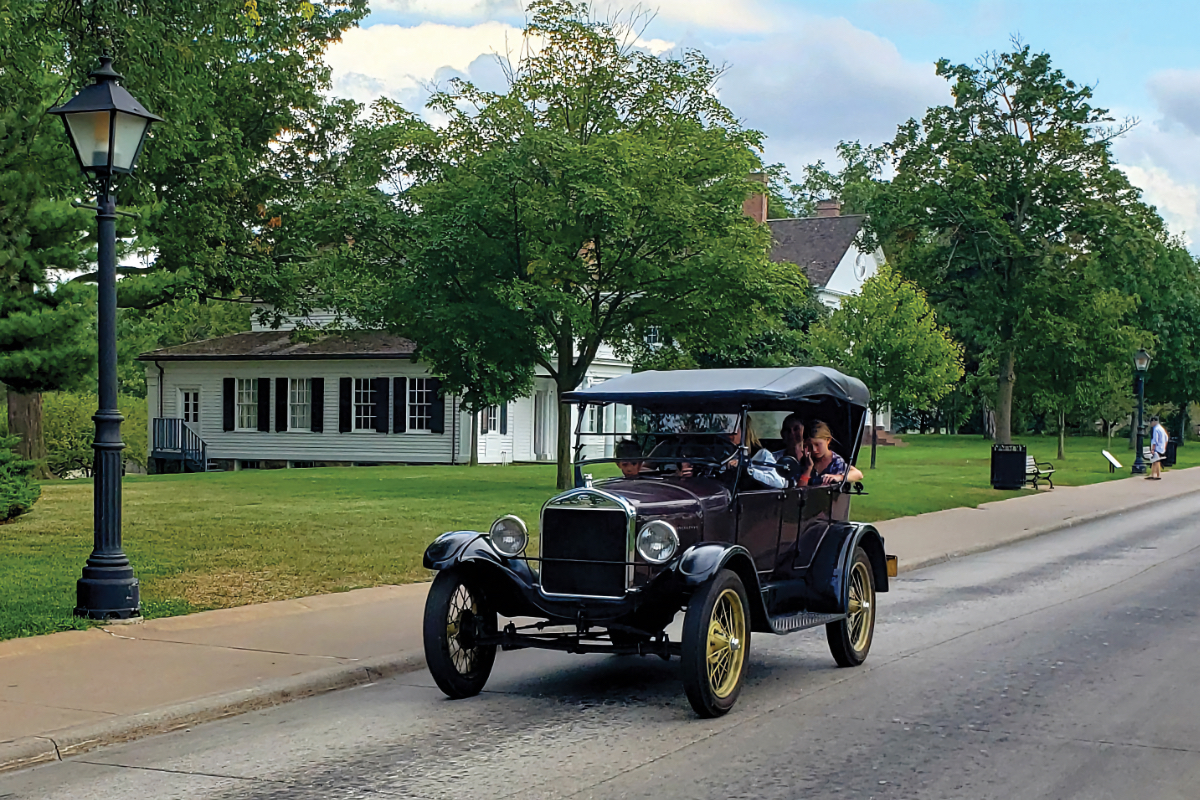
Photo Credit: Julie Perry Nelson
The Henry Ford and Greenfield Village
The East Coast is not the only place to find living-history museums. Dearborn, Michigan, has one of the most impressive museums I have ever visited. The Henry Ford is a tribute to innovators from the 1700s to modern times. There are two parts to the museum: a cavernous building with countless historic vehicles and artifacts; and Greenfield Village, a collection of homes and buildings arranged in neighborhoods by time period. Over his lifetime, Henry Ford gathered many of these historically important buildings and vehicles from all over the United States.
The best way to tour the town is riding in a Model T. What an incredible way to see Orville and Wilbur Wright’s bicycle shop, Henry Ford’s birthplace and a re-creation of Thomas Edison’s laboratory. The first car my grandparents owned was a Model T, so it felt special to ride in the same type of vehicle with my children. My favorite part of our visit to Greenfield Village was talking with “Thomas Edison” about how amazing he was (he was not a humble man).
Greenfield Village could easily take a full day to explore, so stay another day to tour the adjacent indoor museum. The Henry Ford, while not a living-history museum, is well worth a visit. The museum has a vast collection of historically important vehicles and artifacts ranging from an original McDonald’s sign to the chair Abraham Lincoln was sitting in when he was shot. On our visit, it was poignant to sit in the actual Montgomery bus seat Rosa Parks famously occupied in 1955 and see the limousine JFK rode in when he was shot in Dallas in 1963. Seeing these famous vehicles led to a deep conversation with our 10-year-old son about Kennedy’s assassination and the civil rights movement.
These wonderful museums are just a few of our country’s excellent living history experiences. The visits provided some of our family’s most indelible travel memories.
Now, when I read about American history, I feel more connected to our country’s unique stories, as they are no longer just names and dates. The most gratifying feeling, though, is when I hear my children proudly say of these famous places: “I have been there!”


